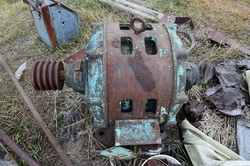
First, we start with old, scrap parts. We've gathered this from scrapyards, foundries, fabrication shops, or junk collectors. This particular part was an old sawmill motor.
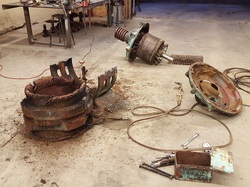
After the part, or parts, have been selected, the disassembly begins. It can be as simple as pulling apart boards, pulling gears off shafts, or cutting apart old welds. This motor was much more complex, and took a number of hours to pull apart everything with minimal use of a cutting torch.
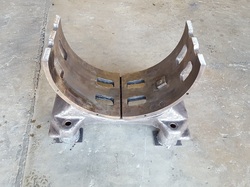
After disassembly, the parts are cleaned, typically by use of a grinder and while wheel to keep some of the original patina.
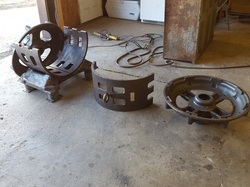
Here, the main motor parts have been cleaned and are ready for welded and reassembled. Total cleaning time for these particular pieces was around 8 hours due to the sheer volume of old, built up grease and heavy paint.
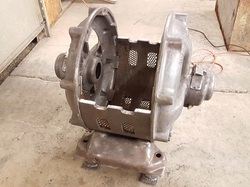
Here we've welded punch plate into the holes on the bottom half of the fire pit to keep the worst of the large cinders in, but to allow air flow through the pit. After welding, these 3 pieces were bolted back together.
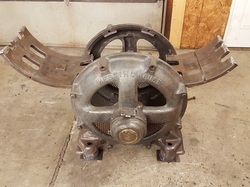
The top half of the center section was cut in half and ground on the ends to allow it to open to either side. These pieces were bolted back in place to allow the ends to sit (as show) and function as small tables.
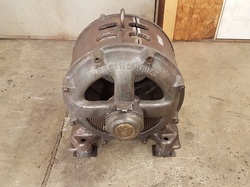
The fire pit fully closed.